
The majority of food items have their expiration date, and bread is no exception. Like most baked products, bread is an example of semi-perishable food. It does not require refrigeration for a short while. It may last 3 to 5 days at room temperature or longer. There are several signs to tell if bread has already gone bad. Bad mold growth is usually the obvious sign that it is time to discard a loaf of bread. But how long until bread begins to mold?
Bread takes 5 days or so until it begins to mold. This depends on several factors such as the storage conditions. Is it humid and warm? Bread can last up to 5 days more in the refrigerator. But this is not ideal (unless you are making breadcrumbs) because the temperature is harsh for the starch molecules. Starch molecules are made up of long chains that shorten and firm up when they cool, a process known as staling. This is visible when stale products become softer when heated and firm up again after cooling.
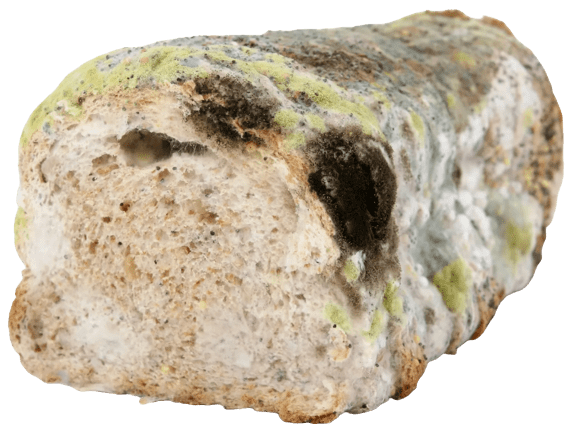
Another factor is the ingredients of the bread. Usually, homemade bread grows mold much quicker than store-bought. This is because store-bought bread typically contains many preservatives that extends shelf life. Examples of these include potassium sorbate, sorbic acid, and sodium benzoate.
Table of Contents
WHY MOLDS GROW ON BREAD?
Mold growth is the most common cause of microbiological spoilage in bread. They are fungi that grow in the form of multicellular filamentous structures known as hyphae, which helps absorb and break down nutrients. Molds present on bread are usually off-white, and sometimes with fuzzy black, green, or pink spots.
Because molds and mold spores are thermally inactivated during the baking process, bread straight out of the oven is mold-free. Molds reproduce through spore. Mold spores are tiny invisible to the naked eye. And you may not realize it, but mold spores are virtually everywhere— in your kitchen and even inside bakeries.
Sure, bakeries can be as hygienic as possible, but the environment is not sterile because of the ingredients used for baking. Dry ingredients, specifically flour, contain mold spores, and flour dust spreads easily through the atmosphere. Just a gram of flour can contain as many as 8000 mold spores. Mold spores present in the atmosphere during chilling, slicing, packaging, and storage contaminate bread after baking.
But mold spores are just one of the requirements in order for molds to grow. The appropriate temperature, moisture, and food (bread) must also be available, all of which can be easily sourced in a piece of bread at room temperature. This is why molds do not grow if the bread crust is rather dry and the relative humidity of the atmosphere is below 90%. Molds will grow quickly in a damp environment, especially on a loaf within a wrapper. This is especially true if the bread is wrapped while still hot from the oven, causing droplets of water to condense on the inside surface of the wrapper.
You might also like: The Mold Penicillium Roqueforti And Blue Cheese
When bread is cut, the interior, which is more vulnerable becomes infected with mold. The moist, cut surfaces of sliced, wrapped bread are a great substrate for molds to develop on. Furthermore, the packaging prevents moisture to escape.
CAN YOU EAT MOLDY BREAD?
Some people have tried removing the moldy portion of a bread, and got away with it. But this is totally not recommended.
There are more than 10,000 different types of molds. In bread spoilage, the 5 most common types responsible are Aspergillus, Fusarium, Mucor, Penicillium, and Rhizopus. Rhizopus (nigricans) Stolonifer is the most frequent type of black bread mold. It has a fluffy look due to the presence of white cottony mycelium and black sporangia.
As earlier mentioned, (storage) temperature has an effect on the growth of mold in bread. This also affects the type of mold that would grow. Neurospora sitophila, a reddish mold, grows in bread that has been stored at high humidity or wrapped while still warm. In tropical countries, such as India, Aspergillus spp is the dominant spoilage mold. Penicillium spp. is usually blue or green, flat and spreads slowly.
You might also like: Saccharomyces Cerevisiae Yeast In The Food Industry
Aside from spoilage, some molds pose a serious threat to public health because they can produce mycotoxins. Mycotoxins are secondary metabolites that are toxic that, when ingested may cause illness or death.They are extremely resistant and can withstand the heating method used to eliminate molds. While directly eating mold-contaminated bread may lead to exposure to mycotoxins, consuming the products of animals fed contaminated bread may also result indirectly in mycotoxin exposure.
The truth is that eating a moldy bread may be poisonous if sufficient amount of mycotoxins is present. And discomforts vary depending on the quantity of toxin ingested, the length of exposure and the age and health condition of the person. In some animals, bread molds are highly toxic. According to studies, 10% of Aspergillus spp. and Penicillium spp. are harmful to mice.
Today, consumers are more likely to reject the entire loaf than to cut away the clearly moldy section and eat the rest, as was once typical in the past. And since it requires a considerable quantity of mold growth to form mycotoxins, molds and mycotoxins pose little harm to public health in developed and developing countries
PREVENTING MOLD GROWTH
Proper storage is the key to prevent mold growth and extend the shelf life of bread. The idea is to keep the bread from being exposed to what molds require to grow: moisture, temperature (warmth), and light. This is especially true if your home is warm and humid. Ideally, you should have a cool, dark, and dry place to store bread. If not, there are several containers that work very well in keeping bread fresh for several days.
Brown paper bag
First is brown paper bag. This is the container most bakeries used for their products, and for a good reason. Paper bag prevents bread from going moldy because of its permeability—it allows moisture to escape. This is why it works great for breads with a hard crust. While closed allows air to circulate inside the bag, helping maintain the crusty crust and moisture in the crumb.
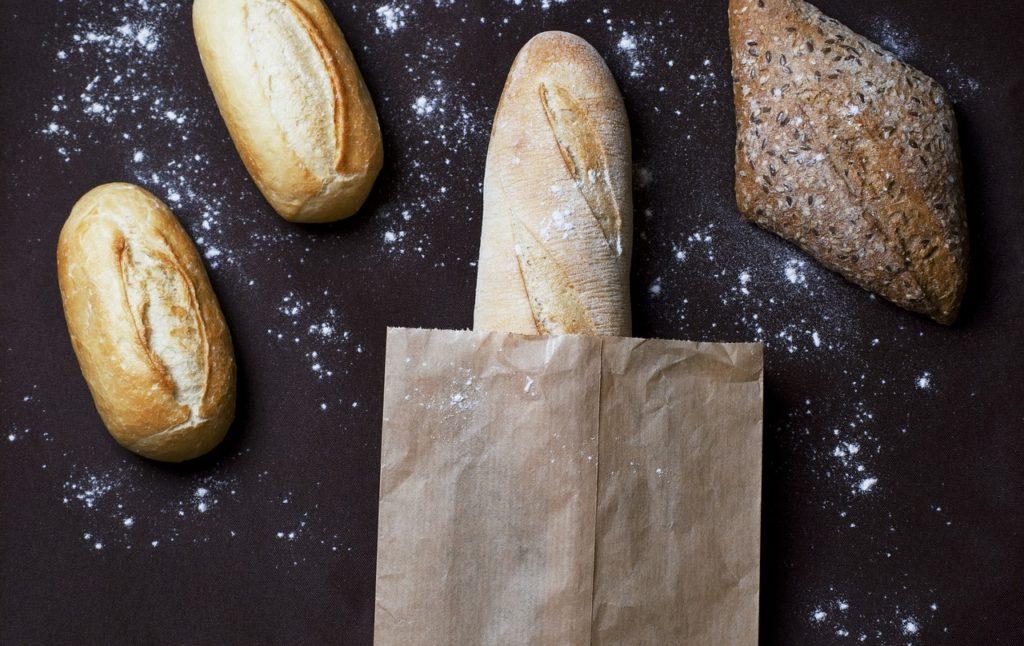
One problem with paper bag is that it makes bread to go stale much quicker. For this reason, bread in a paper bag should be consumed within 2 to 3 days before it becomes stale.
You might also like: What Is Potassium Bromate (E924) And Why Many Countries Have Banned It In Baked Products?
Linen bag/ cloth bread bag
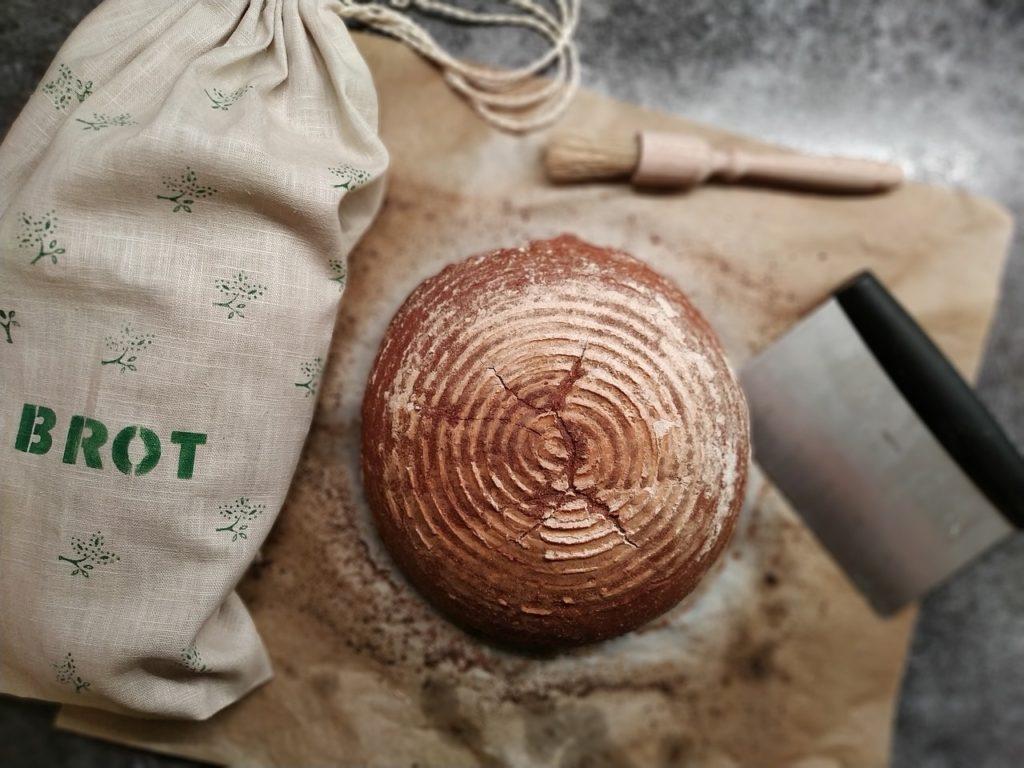
If you do not have a brown paper bag, another great option is a linen bag or cloth bread bag. It helps prevent mold growth in a similar way. Just like a paper bag, a linen bag is made of a material that allows the content to be breathable. It allows moisture to circulate to keep the bread crusty and fresh for 2 to 3 days.
Bread box
A bread box is great because it keeps bread crust crunchy, while keeping the center soft and chewy. Its inside is dark and dry, and the small holes provide a good balance of moisture and enough ventilation. Bread boxes are mainly used to store bread and keep them fresh for a few days. To prevent mold growth, ensure there is ample room for good ventilation. To make sure of this, do not overload the bread box. Doing so will lead to an increase in humidity. Or better yet, use a bigger bread box.
If you do not have a bread box, a kitchen cabinet will do. A kitchen cabinet should provide proper air circulation to prevent mold growth. Just make sure to place the bread first in a linen bag or an open plastic bag.
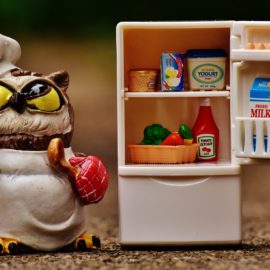
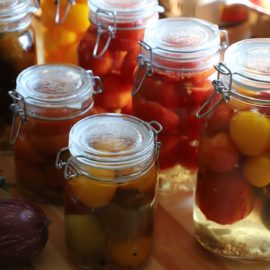
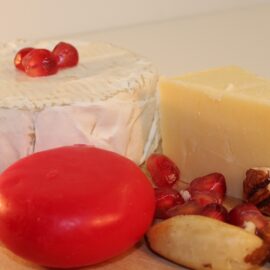
Pingback:Why Calcium Propionate Is In My Bread? - The Food Untold